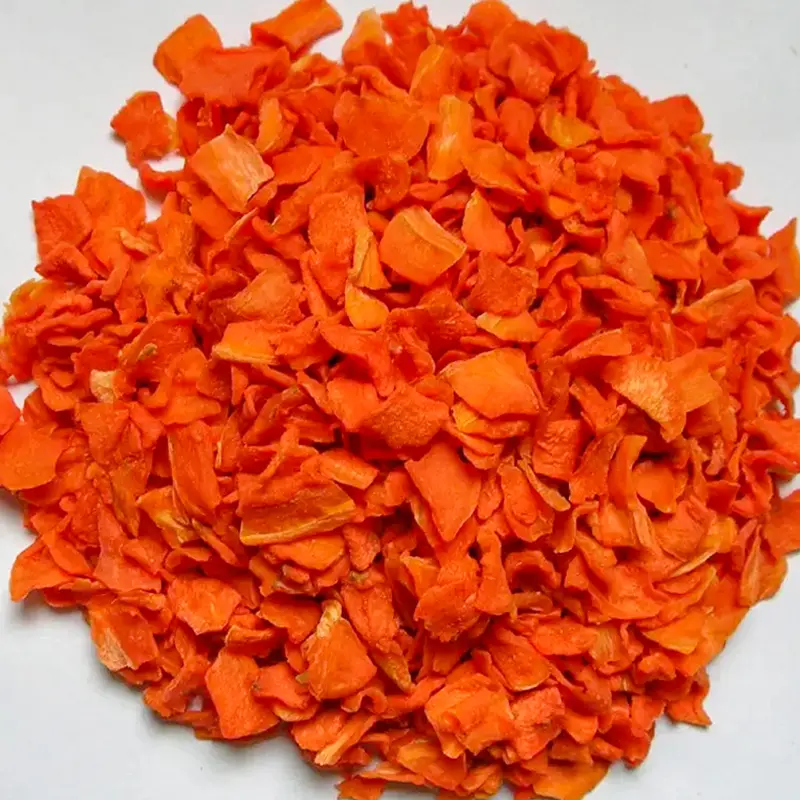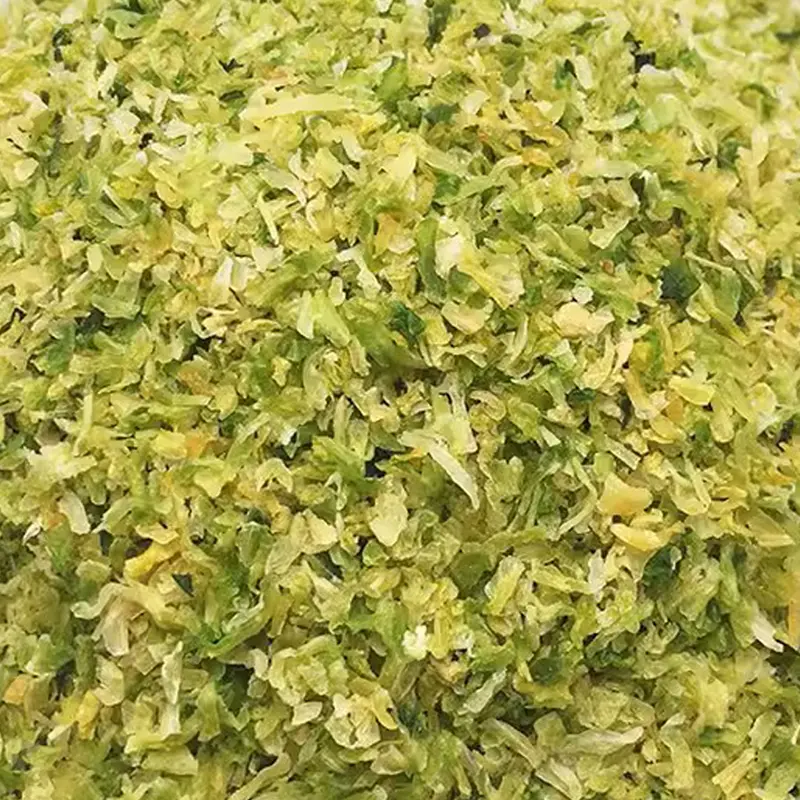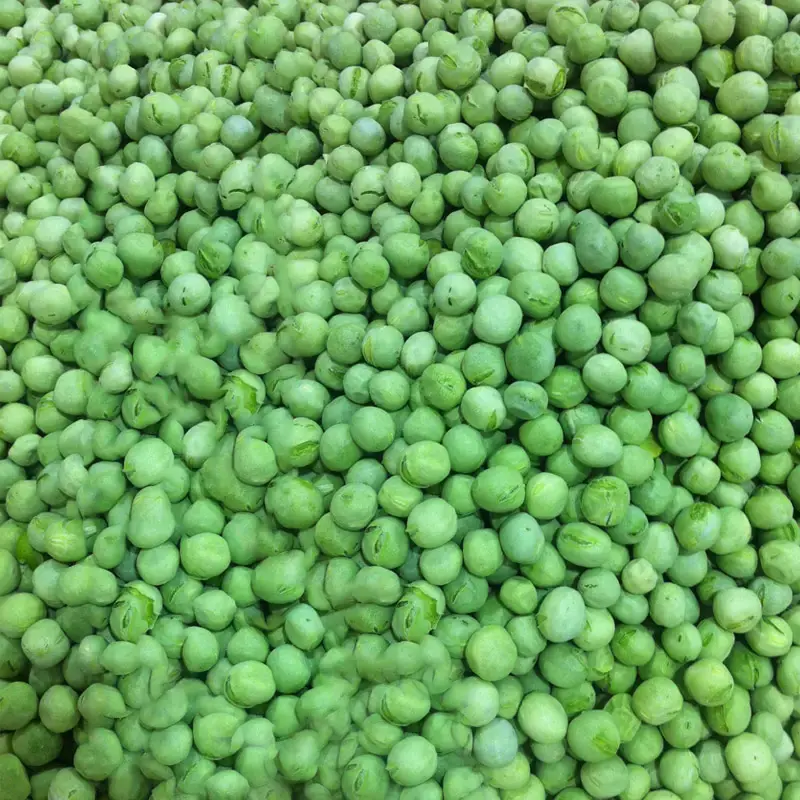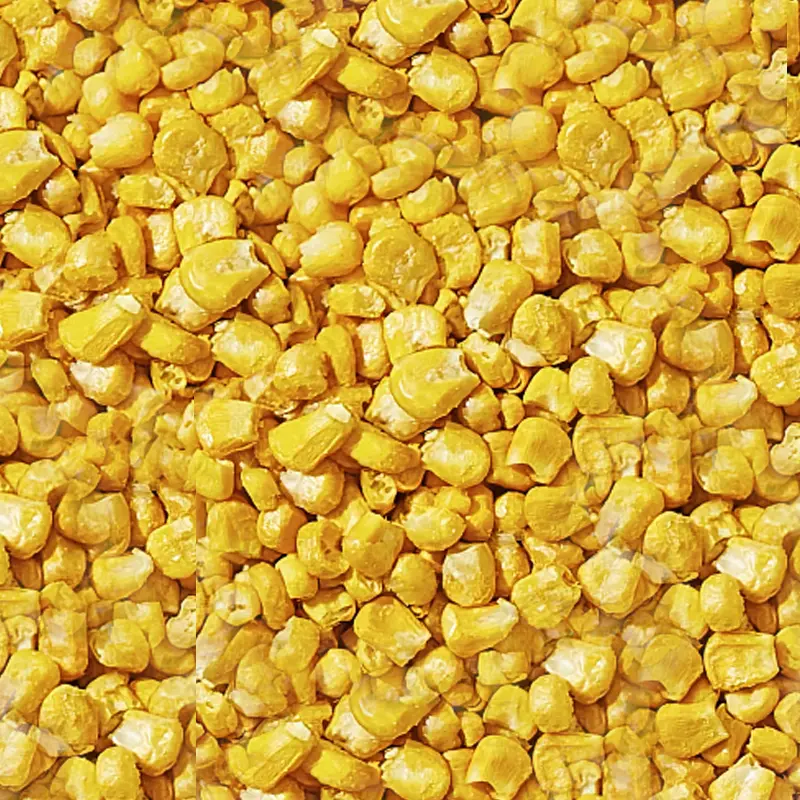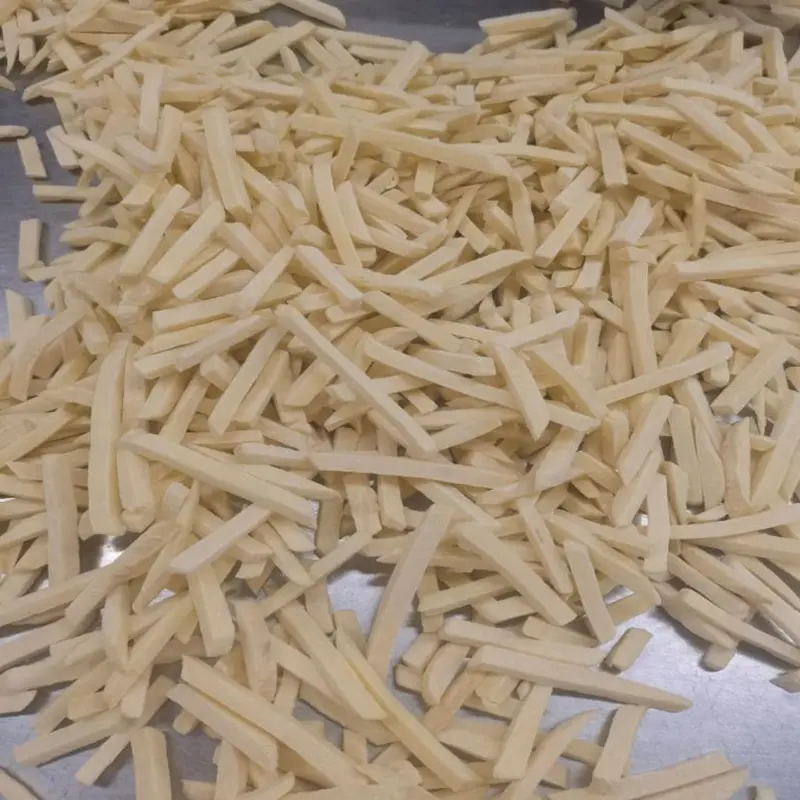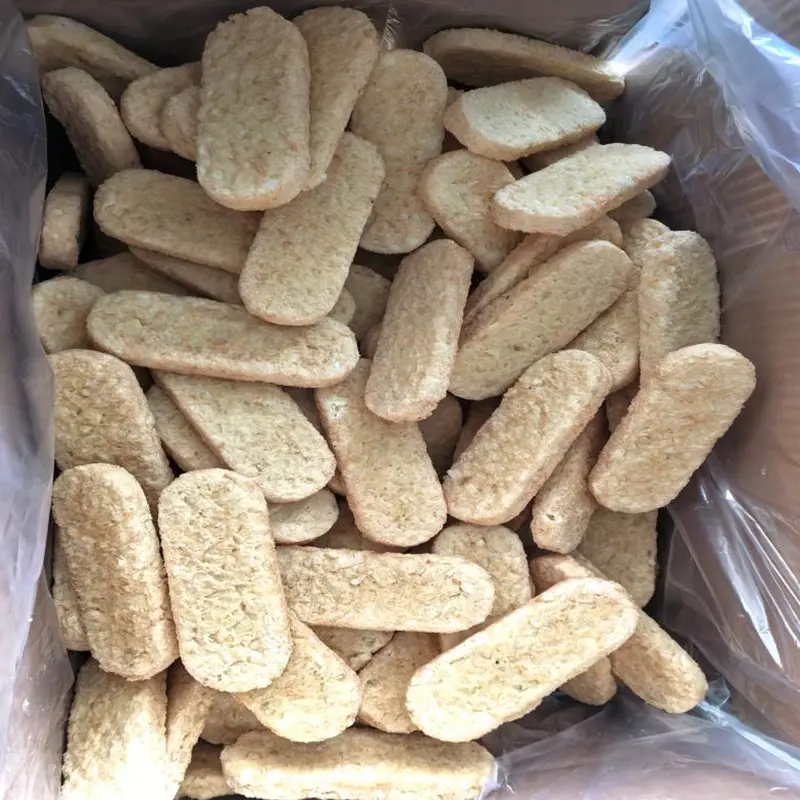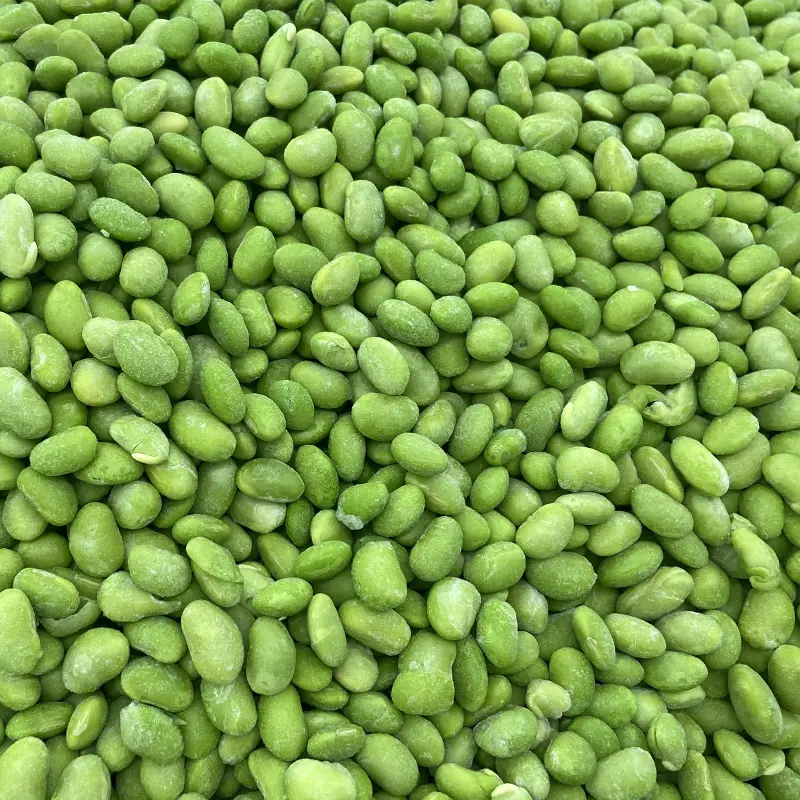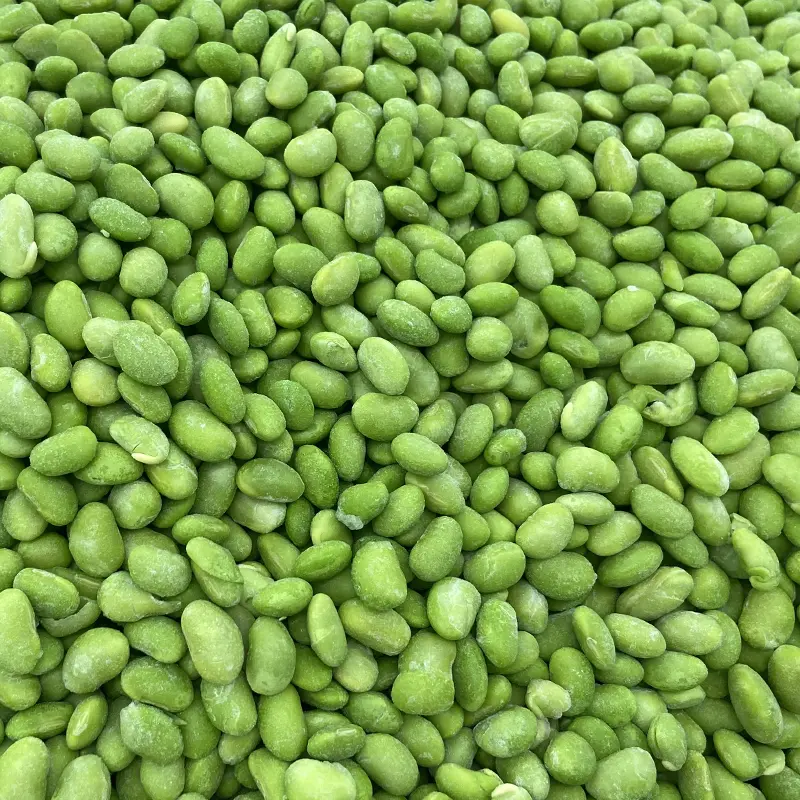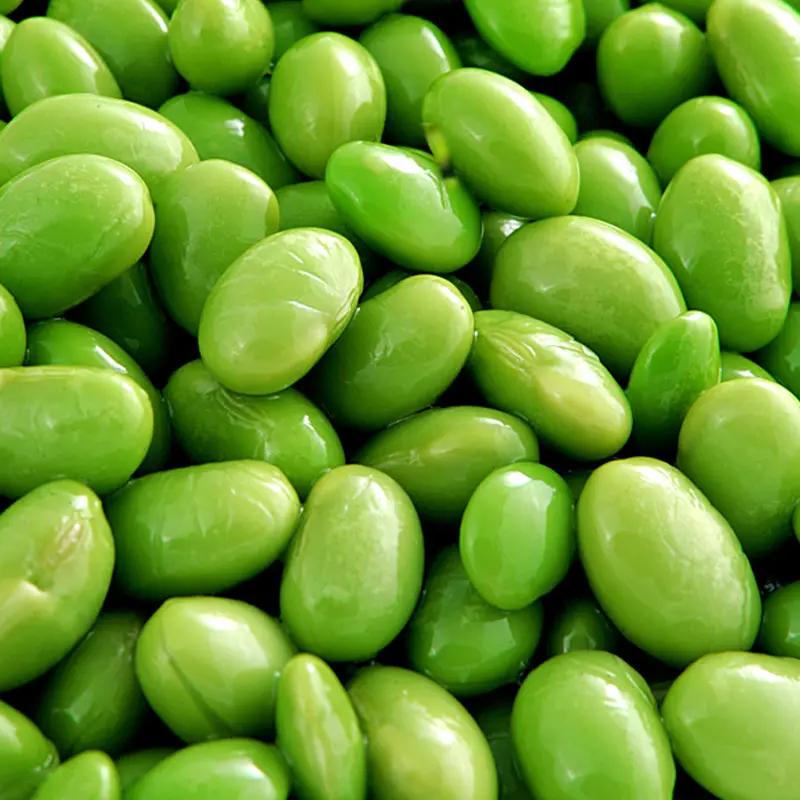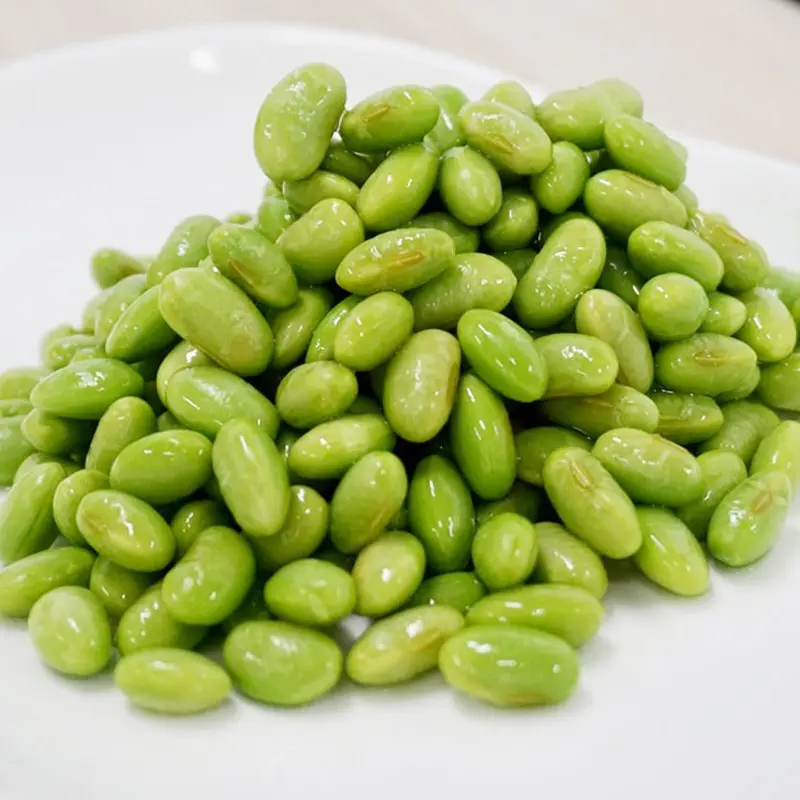Frozen MUKIMAME refer to a deep-processed vegetable product made by quickly freezing shelled fresh edamame (immature soybeans) through low-temperature quick-freezing technology for long-term preservation. Using “quick-freezing” technology, it maximizes the retention of edamame’s nutritional value and natural flavor, with each kernel maintaining a plump, vibrant green color and a crisp, tender texture akin to fresh edamame. This convenient frozen form breaks through seasonal limitations (fresh edamame is mainly harvested from late spring to early autumn), making it a healthy fast-food option for households, catering services, and busy lifestyles. It has the same low-fat, high-protein profile as fresh edamame (13g protein per 100g) and can be quickly cooked, perfectly adapting to modern efficient living needs.
Key Advantages
- Nutrient preservation: Quick-freezing locks in nutrients before edamame kernels fully freeze, retaining over 90% of vitamin C, B vitamins, dietary fiber, and high-quality plant protein (fresh edamame loses ~25% vitamin C after 2 days at room temperature).
- Natural flavor: Free of artificial additives (e.g., preservatives, colorants), it retains edamame’s natural sweetness through blanching and quick-freezing (some products are lightly salted for flavor).
- Vibrant color: Standardized blanching (with vitamin C for color protection) effectively inhibits chlorophyll degradation, keeping each kernel plump and bright green (matching the color of freshly picked edamame within 2 hours).
- Convenience: No need for shelling or washing. Thawed kernels can be microwaved, boiled, or stir-fried (cooked in 1-3 minutes), ideal for busy lifestyles.
- Healthy and low-fat: High in protein (13g/100g) and low in fat (5g/100g), rich in calcium, iron, and other minerals (135mg calcium/100g), making it an excellent choice for fitness, blood sugar control, and daily nutrition supplementation.
Application Scenarios
- Quick home meals: Thawed kernels microwaved for 1 minute, tossed with garlic and soy sauce for “Garlic Edamame”; or stir-fried with chicken/shrimp (“Edamame Shrimp Stir-Fry”) for quick home dishes.
- Restaurant sides: Served with barbecues or hot pot (blanched and plated), or in kids’ meals (mixed with rice/pasta to boost protein intake).
- Healthy light meals: A key ingredient in salad bowls (with chicken breast, quinoa, avocado), or blended into soy milk (mixed with soybeans) for plant-based protein.
- Outdoor and emergency use: Soaked in boiling water (3 minutes) or cooked on portable stoves during camping, or used as emergency rations (6-12 months storage at -18°C).
Quality Tips
- Store at a stable temperature below -18°C; avoid repeated thawing and refreezing (causes kernels to absorb water, soften, and lose texture).
- Control reheating time (microwave on medium-high for 1 minute, boil for 3 minutes). Avoid prolonged high heat (causes softening and yellowing).
- PROCESS FLOW CHART OF IQF MUKIMAME
INSPECTION OF RAW MATERIAL—WATER CLEAN—BLANCHED—COOLING—DEWATERING—IQF—SELECTING—PACKING—STORAGE—SHIPMENT

